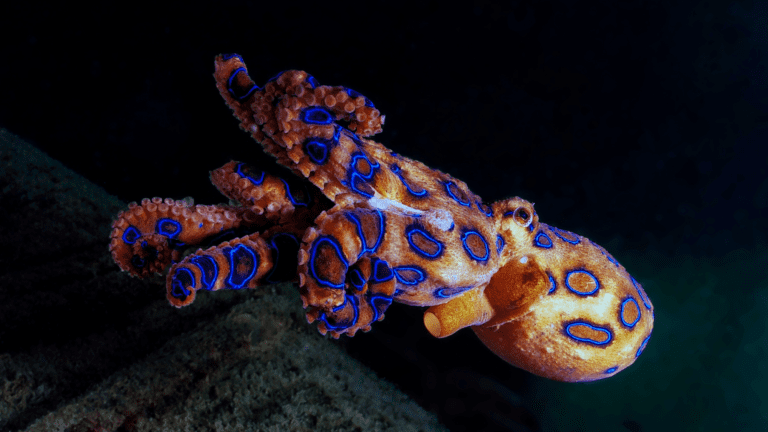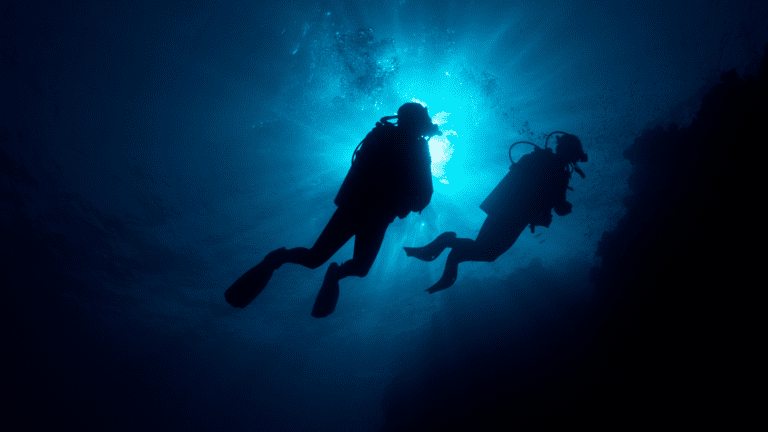The underwater world offers countless types of experiences with regards to diving. Among them, macro and muck diving have captured the attention of underwater photographers and nature enthusiasts alike. Both involve close-up exploration and discovery of small marine life, but they differ in setting, techniques, and types of critters you’ll encounter. Let’s dive into what sets macro and muck diving apart and help you decide which one suits your interests, skills, and diving goals!
What is Macro Diving?
Macro diving focuses on observing and photographing small marine life up close. The term “macro” originates from macro photography, which captures detailed shots of tiny subjects. In macro diving, you’re not after grand underwater vistas or large marine animals but instead are looking for tiny, often camouflaged species hiding within the reefs. From vibrantly colored nudibranchs and pygmy seahorses to intricate coral polyps, macro diving celebrates the small, delicate creatures that populate coral reefs and rocky outcrops.
Where to Go for Macro Diving
Macro diving is often associated with coral-rich areas in tropical waters, where biodiversity is highest. Destinations like Puerto Galera, known for its stunning reefs and rich marine life, are prime locations. Popular dive sites like Secret Bay and Sabang Point are teeming with macro life, making it a photographer’s paradise.
Techniques for Successful Macro Diving
Macro diving requires patience and a keen eye. These small creatures are often hard to spot, blending seamlessly into their surroundings. Movements should be minimized to avoid startling critters or kicking up sediment, which can ruin visibility for photos. Proper lighting is crucial, as many macro subjects reveal their vibrant colors only under the right light. Using a strobe or macro light is recommended, especially in low-light environments or for night dives.

What is Muck Diving?
Muck diving gets its name from the environment in which it takes place a “mucky” seabed with sandy or muddy substrates, often with scattered debris. While this might sound unappealing, these conditions create a habitat for some of the most bizarre and rare marine species. Unlike the colorful coral landscapes of macro sites, muck diving sites can seem stark or bare, with little vegetation and visibility that can be affected by sediment. But within this silt, divers can find some of the most extraordinary marine creatures, like flamboyant cuttlefish, hairy frogfish and blue-ringed octopuses.
Where to Go for Muck Diving
Muck diving hotspots include areas with sandy bottoms or silt-covered substrates, often near river mouths or harbors. In Puerto Galera, sites like Secret Bay double as both macro and muck diving spots due to the variety of substrates and habitats available. Here, the ocean floor is home to a rich variety of weird and rare critters that prefer the sand and silt over corals.
Techniques for Successful Muck Diving
Muck diving demands particular care with buoyancy control to avoid stirring up sediment, which can significantly reduce visibility. Using a steady, controlled kicking style is essential, as is remaining horizontal in the water. Moving too quickly can disrupt the environment and make it difficult to spot well-camouflaged creatures. The focus in muck diving is often on patience and persistence; many muck divers spend several minutes or more examining small patches of seabed to find camouflaged critters.
Choosing Between Macro and Muck Diving
If you’re drawn to bright colors and dynamic scenes filled with coral and marine diversity, macro diving might be for you. Macro diving allows you to see small species in an active, colorful ecosystem, giving you plenty of chances to capture shots with vibrant backdrops.
If you’re more interested in finding unique, rarely seen species and have a keen eye for detail, muck diving could be a perfect fit. The challenge of spotting these critters in camouflaged environments can be very rewarding for those who enjoy exploration and discovery.

Essential Equipment for Both Macro and Muck Diving
- Macro Lens: A macro lens is a must for capturing the fine details of tiny subjects in both macro and muck diving.
- Underwater Flash or Strobe: Proper lighting helps bring out colors and clarity, especially useful in low-visibility muck environments.
- Pointer Stick or Muck Stick: This can help you stabilize your position without disturbing the environment, which is particularly useful in muck diving.
- Dive Torch: Essential for highlighting hard-to-see critters, especially during night dives or in low-light muck sites.
- High-Quality Buoyancy Control Device (BCD): Stable buoyancy is essential for both types of diving to avoid disturbing the delicate underwater ecosystem.
Puerto Galera: A Destination for Both Macro and Muck Diving
Puerto Galera is uniquely positioned to offer both macro and muck diving experiences. With a variety of dive sites, from vibrant coral reefs to silted sandy areas, it provides a perfect backdrop for divers who want to explore both diving styles. Secret Bay and Coral Cove, for instance, cater to both macro and muck diving fans, providing rich opportunities to photograph everything from colorful nudibranchs to elusive frogfish.
Embark on your Dive Adventure with Casalay Boutique Villas & Dive Resort
After exploring Puerto Galera’s diverse underwater landscapes, you’ll want a comfortable place to relax, recharge, and maybe even browse through your incredible photos! Casalay Boutique Villas & Dive Resort offers just that—a luxurious retreat designed with divers in mind. Not only does Casalay provide top-notch accommodations, but they also offer dive services, including guided dives tailored to your interests. Whether you’re into macro or muck diving, Casalay’s experienced guides can help you find the rare critters you’re after, enhancing your diving experience. It’s also the perfect place to unwind after a day spent capturing the hidden wonders of Puerto Galera’s underwater world!
Final Thoughts
Both macro and muck diving offer unique ways to explore the underwater world, each focusing on the fascinating details of small marine life. Whether you’re drawn to the vibrancy of coral reefs or the thrill of finding camouflaged critters in the muck, both experiences are worth trying. By understanding the distinctions and honing the right techniques, you’ll be better equipped to make the most out of each dive.
Author: Zach Yanuario


